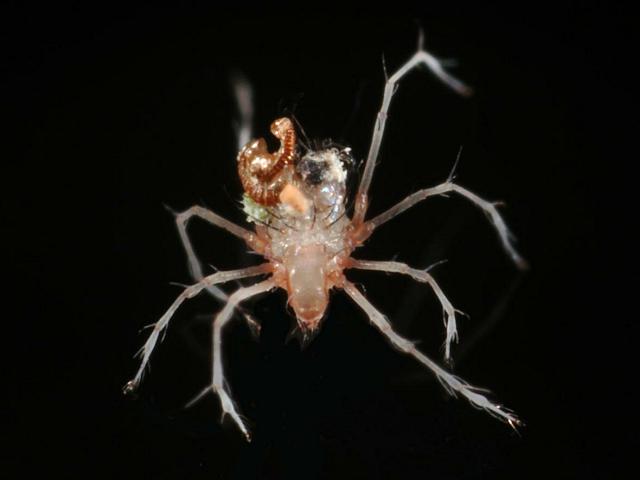
APHOTOFAUNA
An online educational resource dedicated to the photography of
terrestrial wildlife and their habitats, found across South-West
England and the Devon and Cornwall Peninsula by David Fenwick.
Family Damaeidae - An Oribatid mite - On fungus at Lamorna , Cornwall. 30.10.16. (Mite images)
Scroll down and rollover titles to change screen image or click on title to view image.
Oribatid mite
Family Damaeidae
- front view 1
Family Damaeidae
- front view 1
Oribatid mite
Family Damaeidae
- lateral view 1
Oribatid mite
Family Damaeidae
- dorsal view 1
Oribatid mite
Family Damaeidae
- with 0.1mm division rule 1
Oribatid mite
Family Damaeidae
- under microscope 1
Oribatid mite
Family Damaeidae
- dorsal view on fungus 1
Oribatid mite
Family Damaeidae
- dorsal view on fungus 2
Oribatid mite
Family Damaeidae
- fungus and habitat 1
Two nymphs of this species were found on the coral fungus, Ramaria stricta, in a shallow depression inside a small wood north of Lamorn Pottery, Lamorna, Cornwall. 30.10.16.
Identification represents as close as one can get to species level without microscopic identification by an expert. Here I must thank Matthew Shepherd for his help with the identification. Matthew said, "These pics show a nymph of a mite in the family Damaeidae. These long-legged Oribatid mites are fungivores, and while the adult mites develop blackish, sclerotised body armour for protection the nymphs, who don't want to invest in such expensive armour during a transient state, protect themselves by sticking odds and ends to their backs and walking around wearing fetching hats made of crud. This enterprising specimen seems to have found the exoskeleton of other mites to use as protection.
APHOTOFAUNA supports open source data recording and sharing for the benefit of wildlife, recorders, research, science and education. The project works closely with the following bodies and organisations.
The CISFBR or Cornwall and Isles of Scilly Federation of Biological Recorders is an independent umbrella organisation supporting independent recorders and recording groups in the county of Cornwall.
The Cornish Biodiversity Network or CBN is the largest open source wildlife database in Cornwall that sends open source data to the NBN (National Biodiversity Network). It is a new recording system based on the ERICA database, the largest recording resource in Cornwall. The CBN best supports the activities and needs of the independent recording community and recording groups in Cornwall.
The National Biodiversity Network or NBN is a charity that supports open source data sharing and recording supporting conservation, science and education.
"Why do recorders need open source?". Simply because it supports the core values of wildlife recording and the free use of records and data over a very wide network that includes partners like the Natural History Museum.

The main objective of this website is in furthering environmental awareness and education through the medium of photography. To increase awareness and access to the wildlife of the region and help
people find and identify it. Sometimes the difference between species is obvious but many species can only be determined by observing microscopic characteristics that are specific to any one species.


